Whether you just bought your home and want to spruce up the lawn or hope to redo your existing yard, you’ve likely started looking at grass. And that may feel like a daunting task. There are so many options out there, so where do you start? This guide is the perfect place! We’ve gathered information about eleven of the most popular types of grass for lawns. By the end, you’ll have all the information you need to make a solid choice for your home!
1. Fine Fescue
Fine fescue (Festuca spp.) is actually a group of grasses rather than a single grass type. They get characterized by their slender shape and finer texture. The five fine fescues typically found in lawns include hard fescue, slender creeping red fescue, chewings fescue, strong creeping red fescue, and sheep fescue. They each have their own unique attributes. However, in general, they share several traits.
This collection of grasses is known for being low-maintenance and tolerant of several soil types (including those with low fertility). They are all shade tolerant, fast-growing, and require less mowing than other grass species.
Since these five grasses are difficult to tell apart at a glance, your local supplier may group them all together. But it doesn’t hurt to ask to ensure you provide your lawn with the appropriate care.
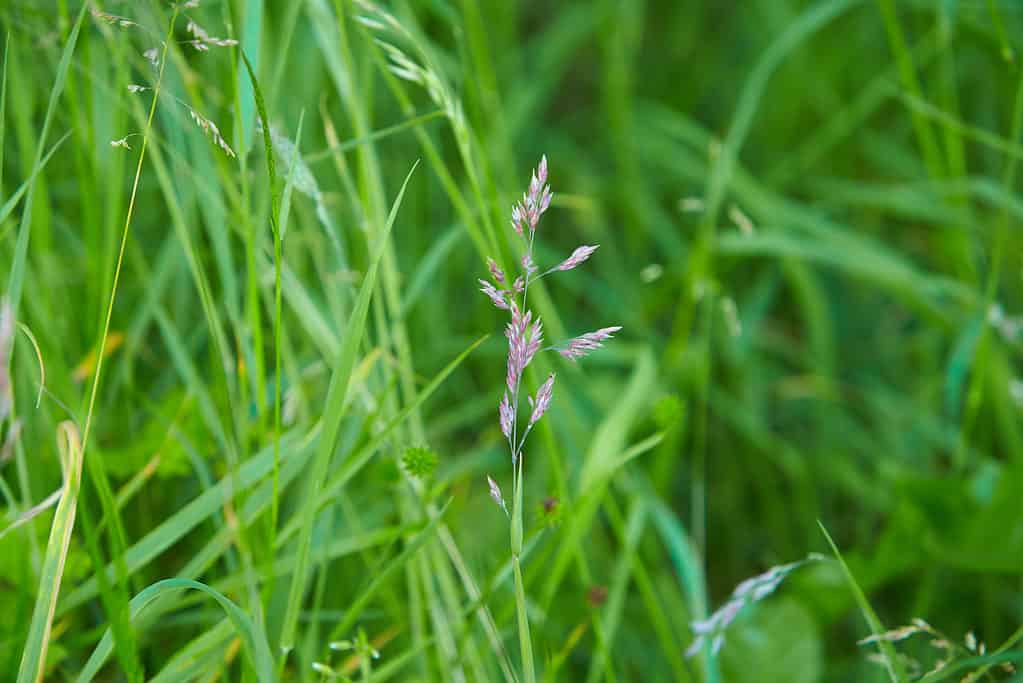
Many species of fine fescue make a fantastic addition to any lawn.
©iStock.com/Irina Pislari
2. Bermuda Grass
This extremely popular warm-season grass is drought and heat tolerant, which is part of what adds to its appeal. However, bermuda grass (Cynodon dactylon) has many other positive attributes that keep homeowners returning to it again and again.
It is a dense sod, which helps with erosion control. Bermuda grass can tolerate nearly any type of soil and is very low-maintenance. Homeowners preferring a tidier-looking yard love that it can get mowed low to the ground. However, keep in mind that Bermuda grass needs full sun to thrive.
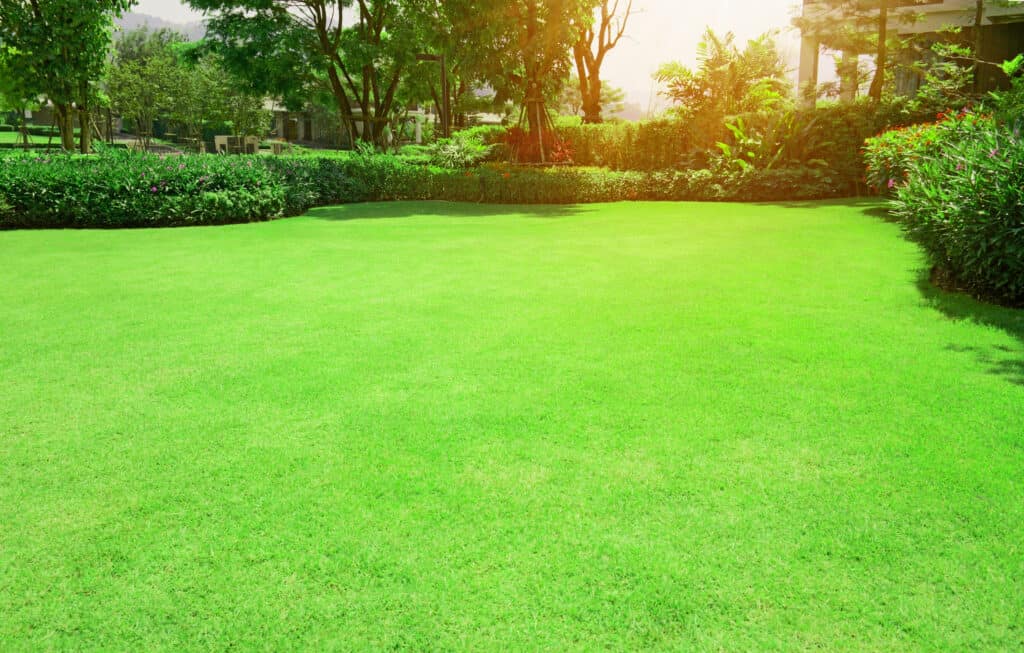
Bermuda grass is one of the most popular types of grass for home lawns. It is easy to care for a looks fantastic when mowed closely.
©aimful/Shutterstock.com
3. Perennial Ryegrass
Perennial ryegrass (Lolium perenne) is a cool-season grass with some significant benefits and potential challenges. It is quick to germinate, which makes it great for weed suppression in the yard. The only downside to this rapid growth is that perennial ryegrass will need extra mowing. So it may not be the best option if you don’t have time in your schedule for more chores.
This grass can tolerate moderate to heavy foot traffic. That is fantastic news for families who like to make the most of their yards. But one important note is that perennial ryegrass isn’t low-maintenance. It requires extra watering and fertilizer during the growing season.
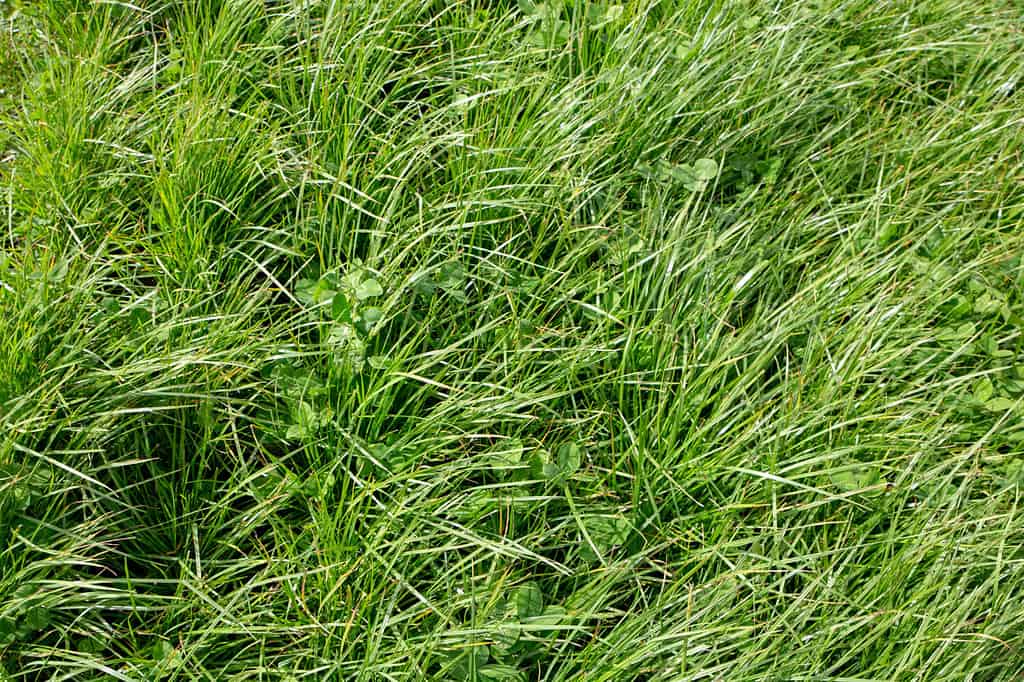
Perennial ryegrass can tolerate moderate to heavy foot traffic, however, it requires extra watering and fertilizer during the growing season.
©Sheryl Watson/Shutterstock.com
4. Bahia Grass
If you are on the hunt for dense, dark-green grass, look no further. Bahia grass (Paspalum notatum) is a warm-season grass that is very popular for these reasons.
Bahia grass is highly tolerant of a range of soils. And its deep roots will help anchor it for the long term. It is drought-tolerant, low maintenance, and can get mowed close to the ground.
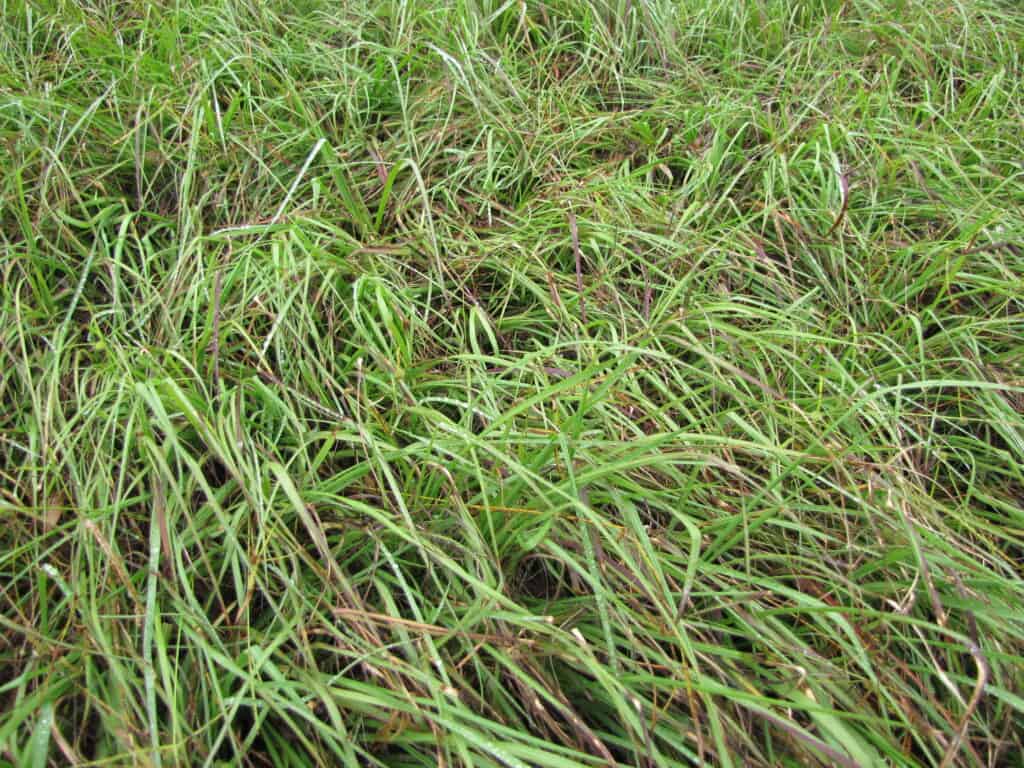
Bahia grass looks incredibly beautiful during the height of summer. But it often turns brown in the winter months.
©Forest and Kim Starr / CC BY 2.0, Flickr – Original / License
5. St. Augustine Grass
St. Augustine grass (Stenotaphrum secundatum) is a warm-season grass that is native to Central America and southeastern North America. It is known for its broad blades and quick-growing nature. This popular grass can tolerate shaded areas or spots that receive full sun exposure.
However, St. Augustine grass does need fertile soil to thrive and cannot handle heavy traffic. Since it is quickly growing, it will also need more regular mowing than some other warm-season grasses.

St. Augustine grass is another popular grass that has long, broad blades.
©NOPPHARAT539/Shutterstock.com
6. Bentgrass
What’s not to love about the soft blades of bentgrass (Agrostis)? The flat, slender blades feel fantastic underfoot. It is a solid choice for those who like to go barefoot on their lush lawn.
However, bentgrass does have some possible cons. It is extremely high-maintenance. That means it requires extra fertilizer, watering, and mowing throughout the entire growing season.

Bentgrass is a solid choice for those who like to go barefoot on their lush lawn, but it’s a really high-maintenance variety.
©Funbee/Shutterstock.com
7. Buffalo Grass
Buffalo grass (Bouteloua dactyloides) is a warm-season grass that makes excellent natural food for deer and bison. One of the reasons it is popular among homeowners is that it is highly drought-tolerant.
Unfortunately, it is better in low-traffic areas. So if your yard gets heavy use, you may want to opt for a different grass species.
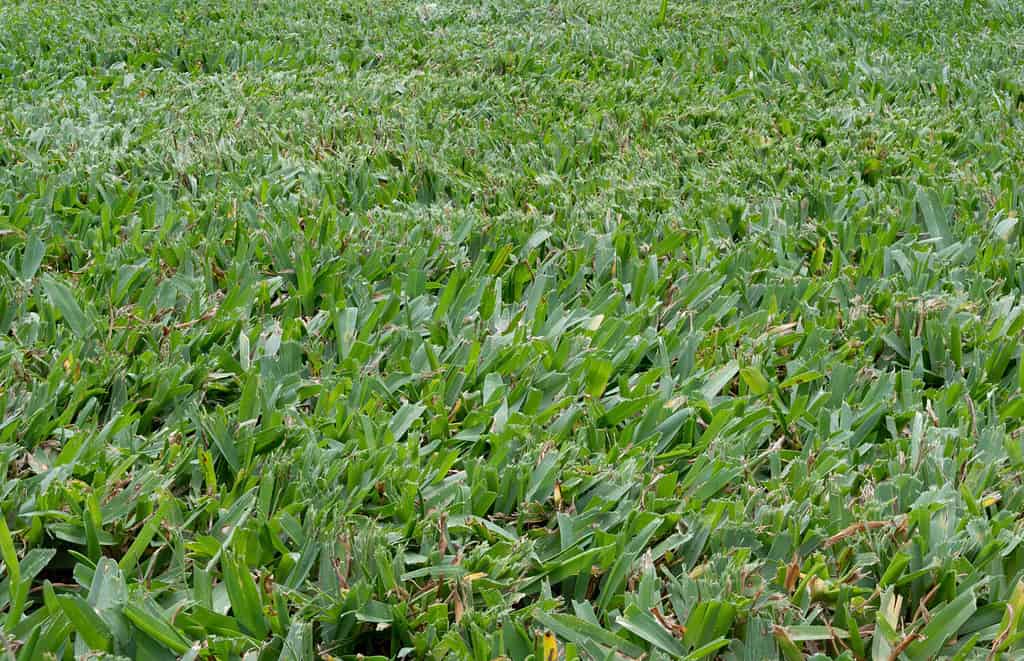
Buffalo grass makes excellent natural food for deer and bison.
©Tim Martorana/Shutterstock.com
8. Kentucky Bluegrass
Kentucky bluegrass (Poa pratensis) works well in much of the United States as a cold-season grass. While it originated in Europe, it rapidly became one of the more popular grasses stateside. These days, it accounts for roughly 10% of all sod sold in the United States. And it is easy to see why.
This grass is self-repairing after getting damaged, making it tolerant to heavy traffic. Its dense sod offers fantastic erosion control. Plus, wildlife and livestock can eat it! The only significant downside is that Kentucky bluegrass is not drought-tolerant and needs extra water during the growing season.
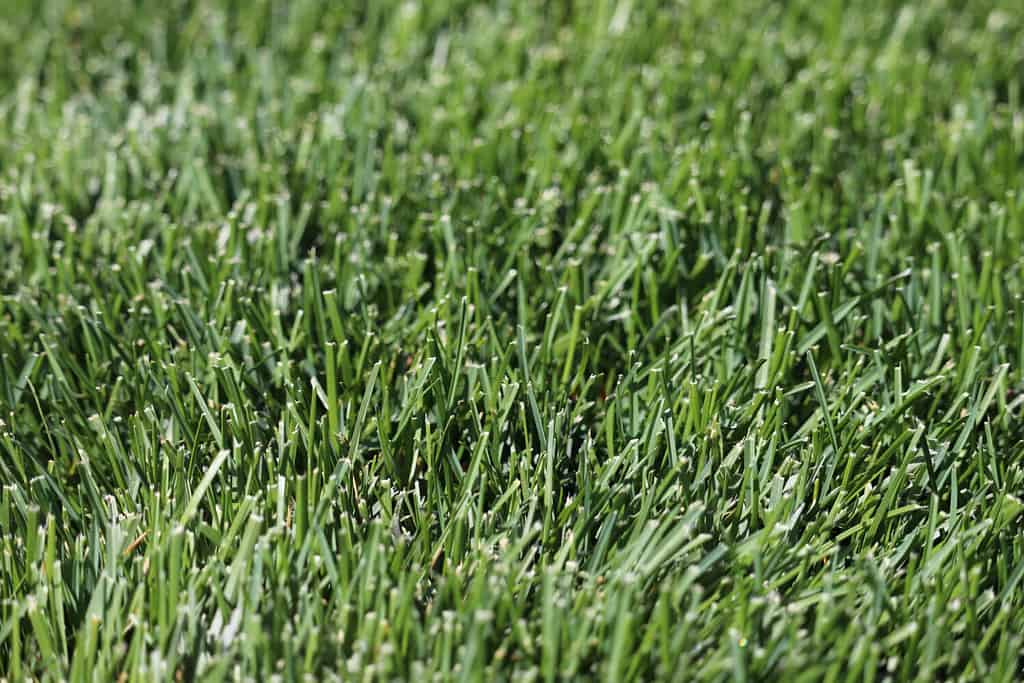
Kentucky Bluegrass is self-repairing after getting damaged, making it tolerant to heavy traffic.
©Joshua Boman/Shutterstock.com
9. Zoysia Grass
This warm-season grass is especially heat and drought-tolerant. Zoysia grass (Zoysia japonica) can also withstand significant foot traffic. That makes this the ideal grass for lawns that get a lot of use. It is slow growing, so keeping on top of the yardwork is a little easier.
However, it doesn’t feel as nice underfoot since it is a little spikey. And, unfortunately, zoysia grass browns in cold weather. That may be a deal breaker if you live in a colder environment.
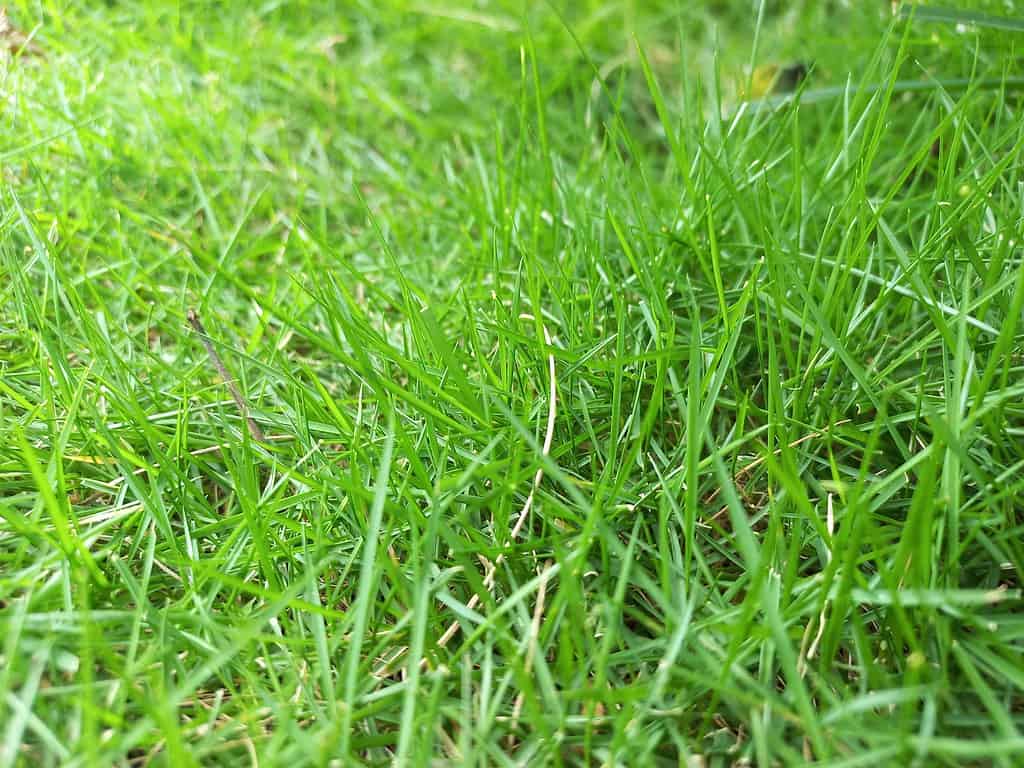
Zoysia grass can withstand heavy foot traffic. However, it is not the softest grass in the world, so you may want to keep your shoes on.
©Belajar Ceria/Shutterstock.com
10. Centipede Grass
Centipede grass (Eremochloa ophiuroides) is a warm-season grass readily found in the Southeastern United States. One of the major advantages of this type is that it can tolerate soil with lower fertility. Its dense sod makes it erosion-resistant. Additionally, centipede grass does not require much mowing or fertilizer.
However, the possible downsides are that it does have a relatively short growing season. So you will have a luscious, light green lawn, but not for an extended period. Centipede grass also requires lots of water in higher heat areas. And it is not suitable for high-traffic areas.
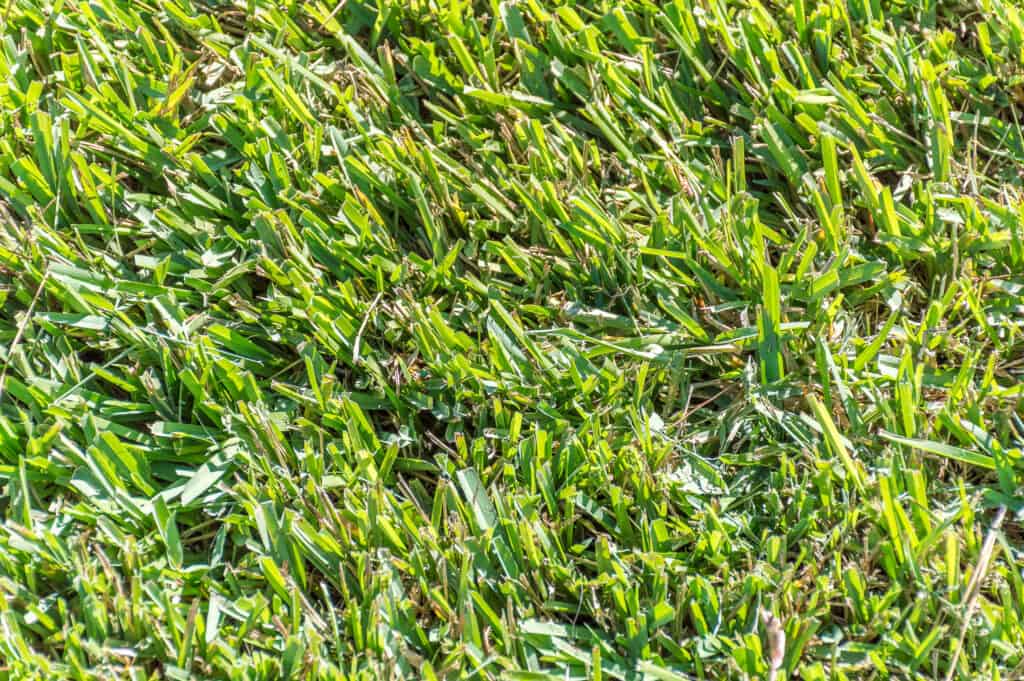
Centipede grass is low-maintenance, which makes it relatively worry-free. However, it does have a short growing season.
©Craig Russell/Shutterstock.com
11. Tall Fescue
This cool-season grass is native to Europe but has gained popularity in the United States. Tall fescue (Festuca arundinacea) is a cool-season grass, low-maintenance, and adaptable to many different environments. On top of that, it tolerates heavy-foot traffic and clay-based or compact soil.
The only possible downside is that it does require extra mowing. So your chores may increase if you lay down this sod.
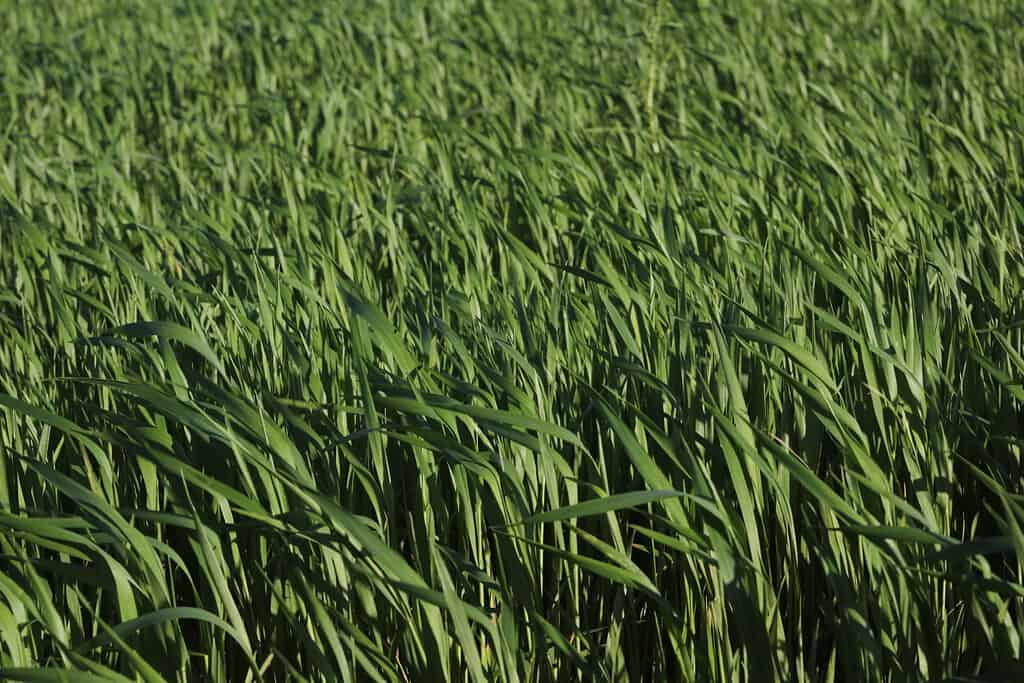
Tall Fescue is a stunning addition to any lawn, partly due to its eye-catching large blades.
©Joann_Pate/ via Getty Images
Which Grass Is Right for You?
Finding the best grass for your needs is important and doesn’t have to be difficult. Start by assessing your needs and the time you have to care for your lawn. If you are busy, choosing a high-maintenance grass may not work for your schedule. Another thing to consider is how much use your lawn will get. You don’t want to damage your stunning lawn after so much work and care.
From there, narrow your choices down based on where you live. Cold-season grasses are better adapted to colder winters and wide temperature fluctuations. On the other hand, warm-season grasses are better for the southeast, southern states, and Gulf Coast region.
| Number | Grass Species |
|---|---|
| 1 | Fine Fescue |
| 2 | Bermuda Grass |
| 3 | Perennial Ryegrass |
| 4 | Bahia Grass |
| 5 | St. Augustine Grass |
| 6 | Bent Grass |
| 7 | Buffalo Grass |
| 8 | Kentucky Bluegrass |
| 9 | Zoysia Grass |
| 10 | Centipede Grass |
| 11 | Tall Fescue |
The photo featured at the top of this post is © NicholasGeraldinePhotos/Shutterstock.com
Thank you for reading! Have some feedback for us? Contact the AZ Animals editorial team.







